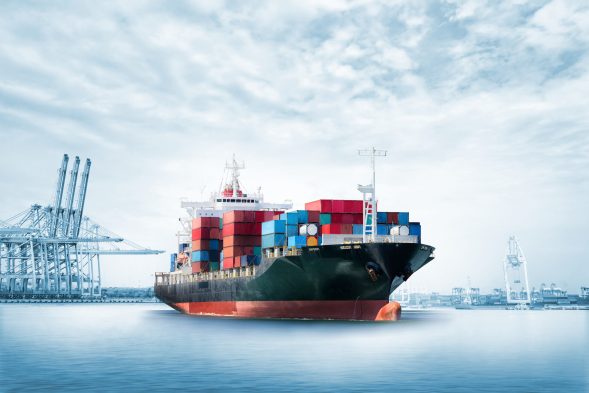U.S. East Coast Dockworkers’ Strike – Key Insights for Container Traders and Leasing Companies
At 12:01 a.m. on October 01, 2024, the International Longshoremen’s Association initiated a strike that has led to the closure of U.S. East Coast and Gulf Coast ports, disrupting the flow of both import and export containers, and impacting overall container operations.
Read also: Implications of Looming Labor Strikes on U.S. Container Trade and Supply Chains
In our previous advisory dated 26 September 2024, we covered the potential impacts on supply chains, including stranded cargo and skyrocketing costs. Now, with the strike already in effect, the situation has escalated, with ripple effects spreading across the U.S. economy.
What Our Customers Are Saying:
Container traders and leasing companies have expressed growing concern over the potential length and severity of the strike. One of our U.S. based customers highlighted:
“Surcharges are climbing, and rerouting is making it harder for small businesses to maintain supply chains. If this continues, securing containers in time for the holiday season will be nearly impossible for container traders like us. Some depots don’t have anyone there to load our drivers, and other depots are setting appointments because they have so many releases and can’t handle all the drivers.”
Others, especially small and medium-sized container traders, are already struggling to absorb these new costs as carriers impose surcharges and adjust services to bypass affected ports. The outlook remains uncertain, with many bracing for further delays and price increases.
However, this also offers opportunities for price increases on existing inventory—a trend that can already be observed on the xChange marketplace. For instance, since July 2024, there has been a steady upward trend in average container trading prices in key North American locations like Chicago, Dallas, Houston, and Montreal, with Denver experiencing a noticeable price spike.
This price rise is positive news for container traders as higher prices generally indicate a healthier market for container trading.
James Langley, from Container Solutions & Designs, LLC, emphasized the difficulties faced at depots during the strike:
“We expected that with the strike, and fewer depots allowing units to IN-GATE, it would be easier to pick up units. But what we’re seeing is that it takes 4-5 hours waiting outside depots, and even then, only when windows are open. On major depots, it’s taking about three weeks just to get an appointment.”
Rob Golliher from Freedom Conex highlighted further operational challenges:
“We think this will impact us over the next couple of months by slowing down deliveries and we suspect there may be more release issues at the depot due to lack of personnel. I don’t think it will be great for our customers or the industry.”
Maersk shared as part of its advisory on 01 October 2024 to “hold all empty containers until the labor disruption has ceased. At this time, we do not have alternative empty depots planned.” Maersk is processing export bookings as usual but has halted bookings for refrigerated containers through ILA-impacted ports.
Maersk’s operational teams have prepared vessel-level contingencies, depending on how long the labor dispute lasts, and encourage customers to reach out for inland routing options through West Coast ports.
Impact and Cost Implications
Christian Roeloffs, cofounder and CEO of Container xChange, provided a detailed analysis of the situation:
“The timing of this strike is especially challenging as we are in our traditional peak season. While many pulled forward shipments earlier this year to mitigate risks, stockpiled inventories will only cushion businesses for so long. If the strike continues for an extended period, we could see significant strain on container availability and shipping schedules.”
For smaller traders, the stakes are particularly high:
“For small and medium-sized container traders, this could result in skyrocketing logistics costs and delays, making it harder to secure containers. The longer the disruption lasts, the more difficult it will be for these businesses to keep pace with market demands. It’s crucial for traders to cultivate a strong network of reliable suppliers during such challenging times” Roeloffs added.
Estimates of the strike’s economic impact vary significantly based on its duration. If the strike lasts only a few days, the overall financial damage could be limited to several billion dollars.
Key sectors, including electronics, auto manufacturing, and consumer goods, face risks of shortages and price hikes, amplifying the financial strain across the supply chain.
Companies heavily reliant on imports, particularly in retail, are likely to face the highest costs as logistics challenges mount in the lead-up to the holiday season. In the longer term, an extended strike could even result in layoffs in sectors heavily dependent on timely shipping.
President Biden’s Statement:
President Joe Biden weighed in on the negotiations, urging USMX to return to the table and offer dockworkers a fair wage that reflects their essential role in the U.S. economy. He highlighted that ocean carriers have seen record profits since the pandemic, with some profits increasing over 800% compared to pre-pandemic levels.
“Now is not the time for ocean carriers to refuse to negotiate a fair wage for these essential workers while raking in record profits,” Biden said in a statement, emphasizing the critical role dockworkers play in supporting the nation’s recovery, especially in the aftermath of Hurricane Helene.
The President also noted that his administration will closely monitor for any “price gouging” activity benefiting foreign ocean carriers, which could worsen the financial burden on American businesses.
Hapag-Lloyd anticipates significant disruptions to services at the affected ports, with the strike likely causing a backlog of vessels even after it concludes.
Carrier Adjustments:
Major carriers, including MSC, Maersk, Hapag-Lloyd, and CMA CGM, have announced surcharges and rerouting plans. MSC has diverted vessels to Halifax, while Hapag-Lloyd is imposing a $1,000 “Work Disruption Surcharge” per TEU starting on October 18. CMA CGM has also announced surcharges ranging from $800 to $1,500 per TEU, effective from October 11.
Looking Ahead
The U.S. dockworkers’ strike presents an major challenge for container traders and leasing companies, with surging costs, delays, and significant uncertainty ahead. As Christian Roeloffs advises, flexibility and proactive planning will be critical. Companies should secure container availability early, explore flexible leasing agreements, and stay updated on carrier announcements to mitigate the strike’s impact on their operations.





Leave a Reply